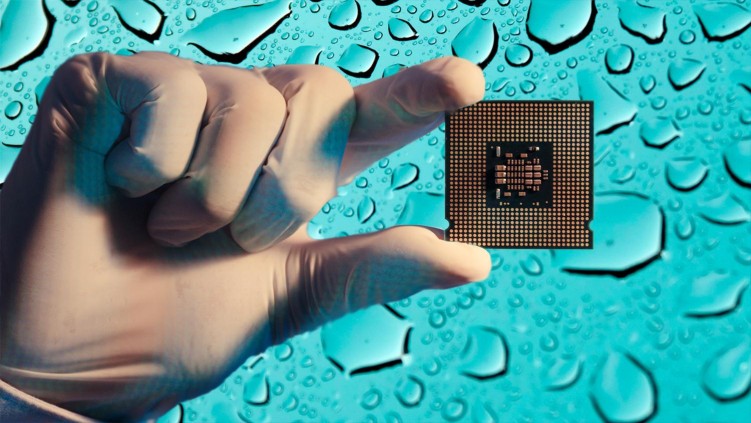The semiconductor manufacturing industry has experienced significant growth over the past decade, driven by an increasing demand for electronic devices and emerging technologies. One essential yet often overlooked aspect of this industry is the requirement for Process Water Engineering.
In this post, we will explore the economic trends shaping the semiconductor sector, delve into the specific aspects of purified water, and examine its effects on semiconductor products. Our focus will be on the importance of process water and its growing significance as the sector continues to expand.
In the past ten years, the global semiconductor market has witnessed substantial growth. In 2011, the market was valued at approximately $300 billion, and by 2021, it had reached an astounding $439 billion, marking a compound annual growth rate (CAGR) of about 4%. This growth is fueled not only by consumer electronics but also by the emergence of new technologies such as the Internet of Things (IoT), artificial intelligence (AI), and electric vehicles (EVs), which all heavily rely on microchips and integrated circuits.
As the demand for electronic devices and complex technologies continues to rise, so does the need for ultra-pure water in semiconductor manufacturing. The UPW market is expected to reach nearly $8 billion by 2026, with a CAGR of 5.5% from 2021 to 2026.
The production of semiconductor chips and integrated circuits necessitates the highest purity levels of water to ensure optimal product quality and yield. This is due to the intricate and delicate nature of the manufacturing process, where even the slightest impurities or contaminants can lead to defects in the microchips, causing malfunctions and reducing product yield. To put things into perspective, a single dust particle, about 0.5 microns in size, can wreak havoc on a chip's intricate circuitry.
To achieve the required quality of water, a rigorous purification process is employed, removing contaminants down to parts per billion (ppb) or even parts per trillion (ppt) levels.
To achieve the required level the process can include:
Cartridge filtration:
Cartridge filters consist of pleated or wound porous materials, typically with pore sizes ranging from 1 to 100 microns. They are designed to remove suspended particles, sediment, and other large debris from the feed water. Cartridge filters are commonly used as a pre-filtration step, protecting downstream equipment from fouling and increasing their lifespan. Flow rates can vary depending on the filter design and required filtration quality, but they generally range from 1 to 100 gallons per minute (gpm).
Organic scavengers:
Organic scavengers are specialized adsorbent materials, such as activated carbon or modified zeolites, which capture and remove dissolved organic compounds from water. These materials typically have a large surface area and high adsorption capacity, enabling them to remove organic compounds with molecular weights as low as 500 Daltons. Organic scavengers are often utilized as a pre-treatment step to protect downstream equipment, such as RO membranes, from fouling by organic matter.
Softeners:
Water softeners use ion exchange resins to replace hardness-causing ions (calcium and magnesium) with sodium or potassium ions. This process reduces water hardness, which can cause scale formation and impair the performance of downstream equipment. Softeners typically operate at flow rates between 1 and 100 gpm, depending on the system size and application requirements.
Reverse osmosis (RO):
RO is a pressure-driven membrane separation process that removes dissolved ions, organic compounds, and particulate matter down to pore sizes as small as 0.0001 microns (100 Dalton molecular weight cut-off). The process can achieve up to 99% reduction in dissolved solids and significantly decrease water conductivity, typically to less than 10 µS/cm. RO systems can operate at a range of flow rates, from a few gallons per day (GPD) for small-scale applications to thousands of gallons per minute (GPM) for large-scale industrial processes.
Deionization resins (cation and anion): Deionization is an ion exchange process that uses cation and anion exchange resins to remove positively and negatively charged ions from water, respectively. This further reduces water conductivity to levels below 1 µS/cm. Cation exchange resins typically remove ions like sodium, calcium, and magnesium, while anion exchange resins remove chloride, sulfate, and nitrate ions.
Mixed bed polishers:
Mixed bed polishers contain both cation and anion exchange resins in a single vessel, allowing for a more thorough removal of dissolved ions. This results in extremely low conductivity levels, often less than 0.1 µS/cm, and near-total ion removal.
Micro-, nano-, and ultrafiltration:
These filtration technologies use pressure-driven membranes with different pore sizes to remove particles, colloids, and macromolecules from water. Microfiltration membranes have pore sizes between 0.1 and 10 microns, nanofiltration membranes between 0.001 and 0.1 microns (typically with a molecular weight cut-off of 200-1000 Daltons), and ultrafiltration membranes between 0.01 and 0.1 microns (with a molecular weight cut-off of 1,000-100,000 Daltons). Each filtration technology targets specific contaminants and can operate at various flow rates depending on system design and application requirements.
UV Sterilisation:
Ultraviolet (UV) and ozone sterilization methods are used to disinfect water by killing or inactivating microorganisms, such as bacteria, viruses, and protozoa. UV sterilization exposes water to UV-C light at wavelengths around 254 nm, which damages the DNA of microorganisms, rendering them unable to reproduce
These methods play a crucial role in achieving the desired water quality for semiconductors. Each method targets specific contaminants and operates at different flow rates, making them suitable for diverse requirements. By employing a combination of these technologies, it is possible to achieve the highest levels of water purity and ensure the optimal performance of downstream equipment, thus contributing to the overall efficiency and effectiveness of the manufacturing process.
The semiconductor manufacturing industry's rapid growth, underscores the critical importance of ultra-pure water in the production process. As the Ultra-Pure Water market is expected to reach nearly $8 billion by 2026 with a CAGR of 5.5%, it is evident that water process technologies, such as R.O. and D.I. play a vital role in ensuring optimal product quality and yield.
By achieving purity levels down to parts per billion or even parts per trillion, semiconductor manufacturers can mitigate the risk of defects and malfunctions caused by impurities, ultimately enhancing the performance and reliability of electronic devices and emerging technologies.
The growing significance of water filtration in the semiconductor industry emphasizes the need for continuous innovation and investment in advanced water treatment solutions to meet the ever-increasing demand for high-quality semiconductor products.

